Is it chilly in here, or is it just me? Well, it is February which means, by most accord, it's still winter. Where I live has also gotten quite a bit of snowfall recently so it's only fitting that today we're looking at a Lich class. You may or may not believe this, but the last time I looked at a custom class on this series was over half a year ago, so it's nice to finally be doing one again.
This one in particular was created by DrNoOne, and I will be talking to them in this interview to see how this class was developed, and let me tell you, it's quite an adventure!
The Lich
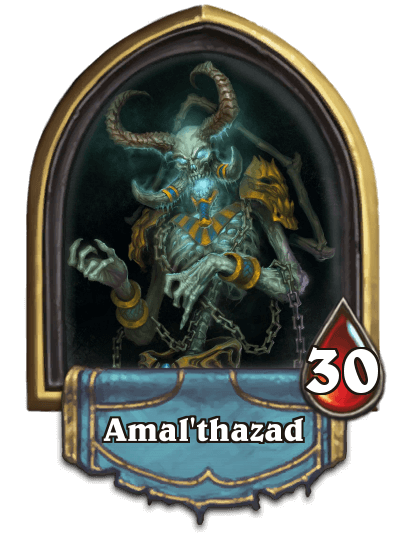
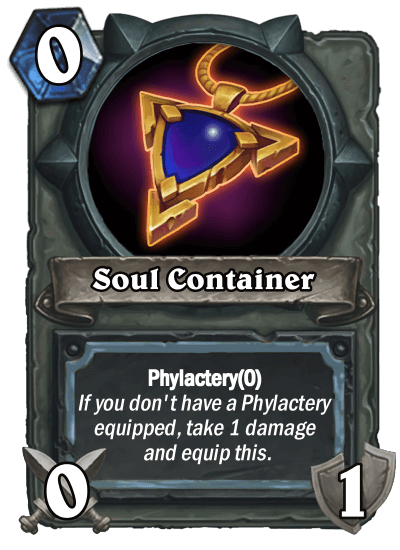
As a Lich, your base hero is Amal'thazad, rocking the typical Lich attire and just as boney as ever. One has to wonder how much thick skin a Lich his, because this one doesn't seem to have any skin at all. He may be a practitioner of dark magic, but he still has feelings.
One very interesting thing of note for the hero is Soul Container. Any time you play as a Lich, you always start the game with a Soul Container equipped. It also has a new keyword specific to the class, Phylactery, but I'll get into that later.
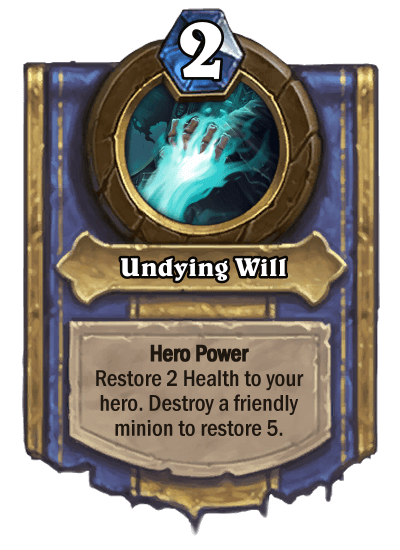
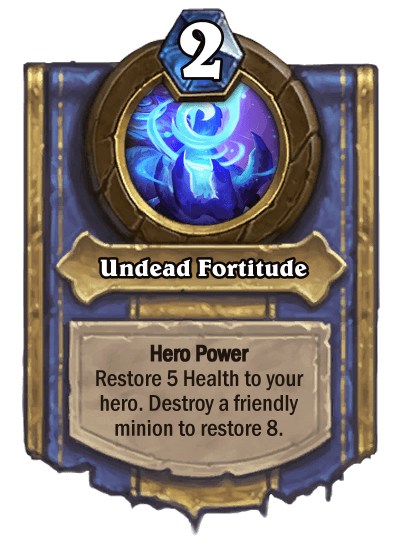
As a Lich, your basic Hero Power is Undying Will. You can use this to target your hero to restore 2 Health to it or to destroy one of your own minions and restore 5 Health instead. Upgraded, it becomes Undead Fortitude increasing the base healing to 5, and the healing when you destroy one of your own minions to 8.
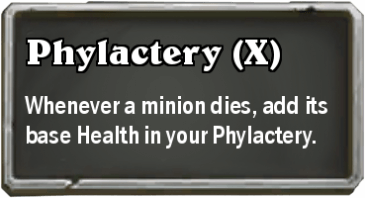
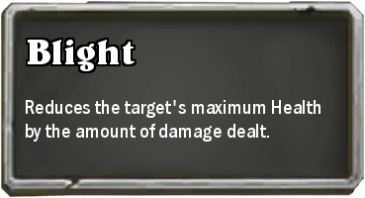
This class actually has two new keywords (and is the first class featured on this series with two keywords). As we saw before on Soul Container, one of the new keywords is Phylactery. Phylactery is a keyword that is specific to weapons (something that is almost never seen in the entirety of the world of fan-made content). They are static weapons that hold a Health value, and whenever any minion dies, its Health gets stored into the Phylactery. The stored Health can then be used for various card effects. In the event that you don't have a Phylactery currently equipped, you will take 1 damage and automatically equip a Soul Container. Each Phylactery also contains a counter to keep track of how much Health is stored in it.
The other new keyword in this class is Blight. Whenever a card with Blight deals damage, whatever it damaged will lose the Health that it was damaged for. In simpler terms, it's effectively damage that can't be healed. Minions that are affected by Blight will also have a "Blighted" condition applied to them, which can be useful for some card abilities.
And now it's time to interview DrNoOne about how this bone-chilling class was created.
Give us an overview of the class. What does it do good at? Where does it falter? What cards give us the best first view of the class?
DrNoOne: "It is an extremely board-focused class, having access to efficient Area of Effect removal as well as many ways to create 1/1 tokens (named Bone Warriors and acting as the class’ Silver Hand Recruits). While it has access to some direct damage effects as well as single target removal, those are always at a premium and linked to some additional requirement, usually the sacrifice of friendly minions, and the same is true for card draw. The class also has access to no healing besides the Hero Power.
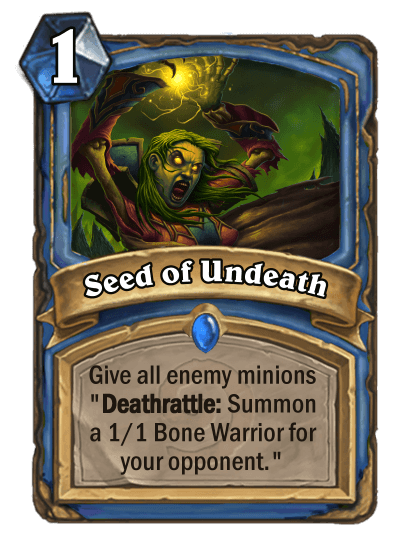
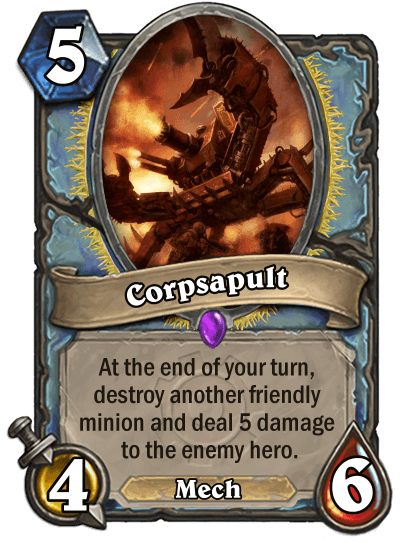
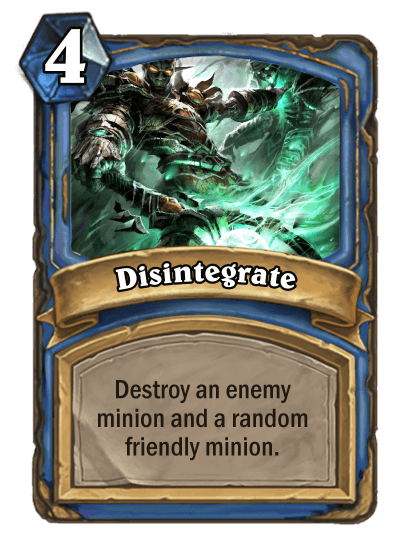
Phylacteries themselves, and stored Health as a secondary resource, proved to be a fascinating design space to explore. While in many ways similar to Armor, having greater control over when to expend that resource allowed for the creation of a much more diverse array of cards.
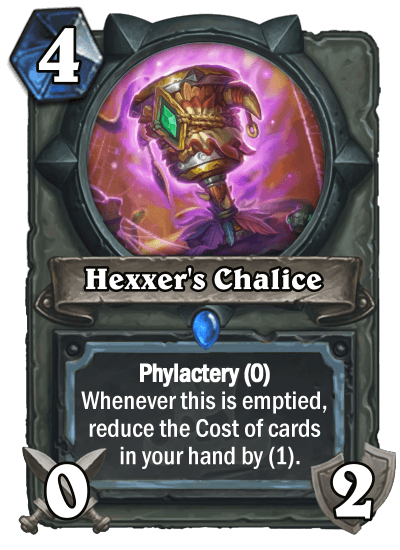
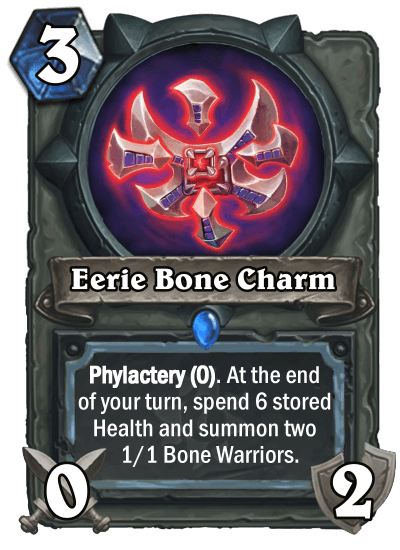
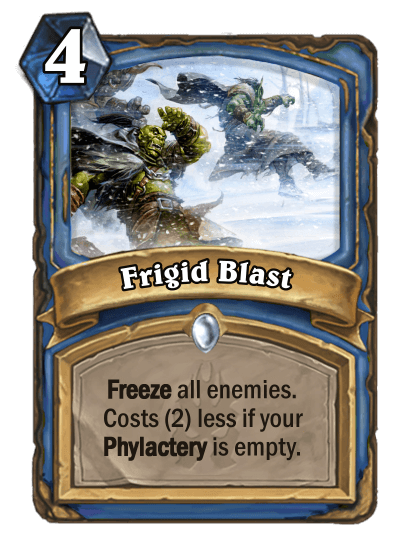
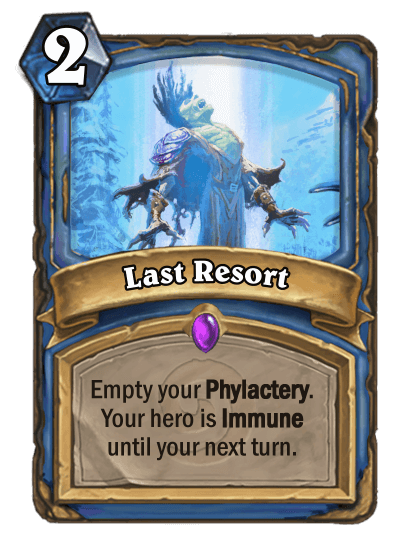
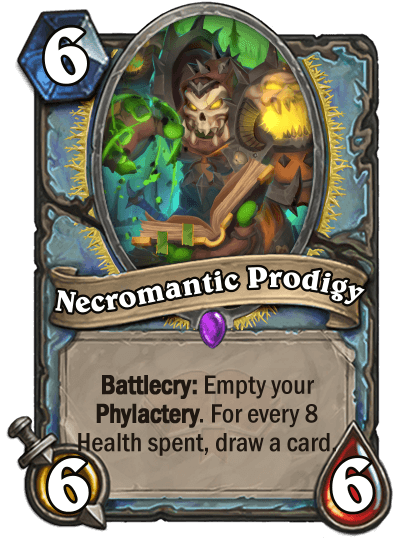
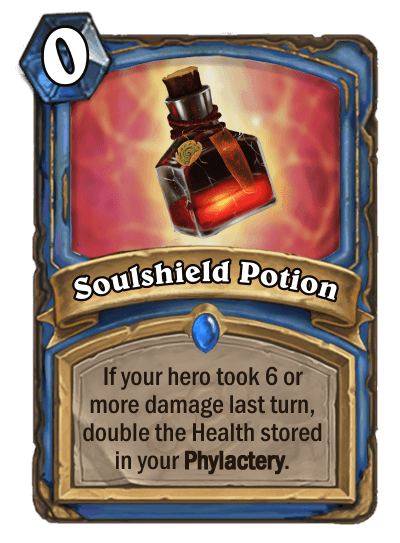
Blight also proved a very interesting design challenge. While its main utility proved to be in the application of the Blighted condition, I was always mindful that too many Blight effects could quickly become overbearing. it was a great exercise to design around this self-imposed restriction.
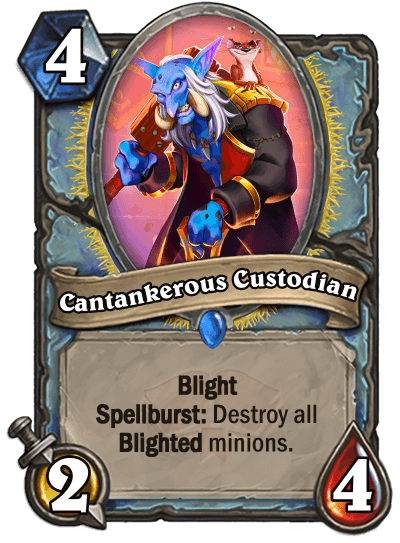
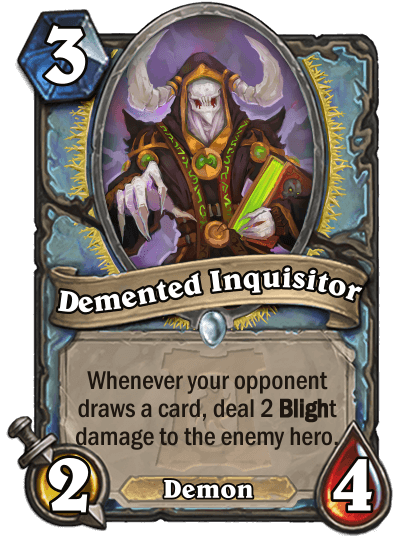
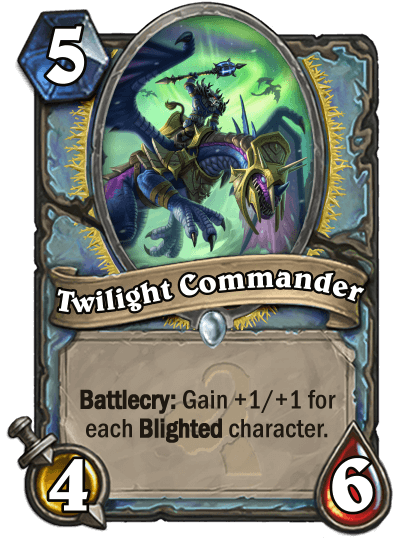
Other minor themes of the class include the resurrection of enemy minions that have died this game, disruption of the opponent through cost increases, and applying Deathrattle effects to enemy minions."
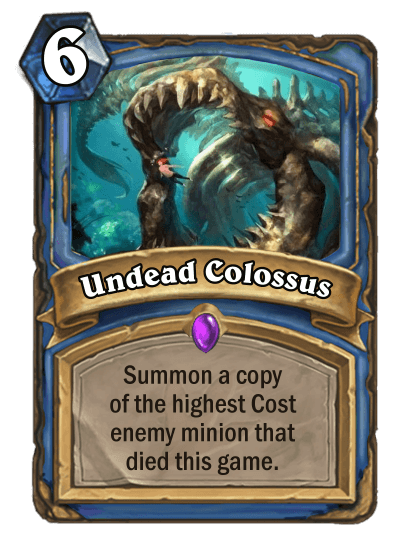
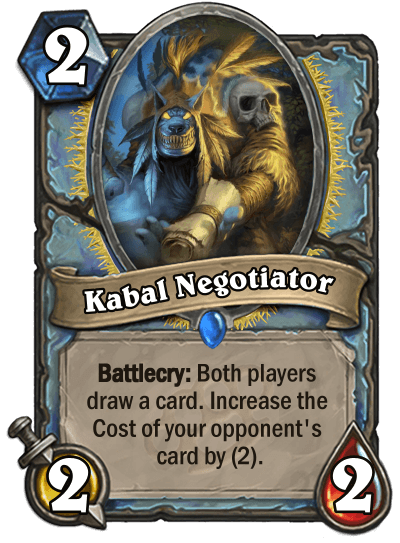
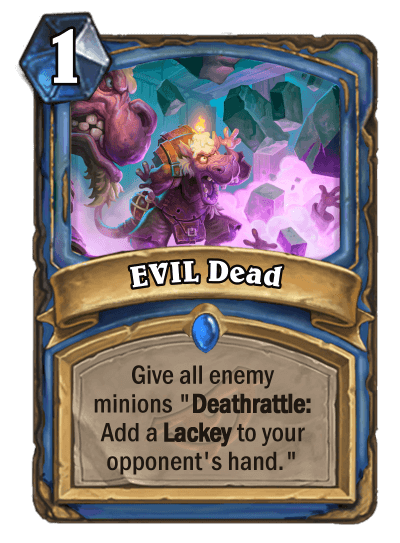
What initially gave you the idea to make a Lich class, and the specific keywords? Do they go together in any way?
DrNoOne: "It’s funny how a small number of basic ideas at the beginning of the design process shape your decision-making. When I decided to start working on a class I only knew three things for sure: 1.As an obsessive control and combo player, I wanted a class with the ability to support a robust control archetype. 2. I wanted to experiment with minion sacrifice mechanics, because I find them fascinating in a tempo-driven game like Hearthstone. 3. I wanted my class to have a secondary resource.
Surprisingly, it was the third point more than the second that led me to Lich. There’s only so many places you can use to keep track of a resource without making something that is just reflavoured Armor, or requiring new UI elements, so I quickly settled on the weapon slot as my best option. It was this that immediately brought to mind a Lich’s phylactery, the vessel they keep a fragment of their soul in so they can reconstitute themselves if their body is ever destroyed.
The Lich has always been a fascinating character to me, in fantasy setting in general and in Warcraft with Kel’Thuzad’s story in particular, how his pursuit of knowledge turned into a path of isolation and self-absorption, ultimately leading to him transcending the limitations of mortality, but losing every inch of his humanity along the way.
Having decided on Lich (and more specifically on Amal’thazad of the Ebon Blade, since Kel’Thuzad was already a card), I had to develop the core fantasy of the class, and translate that into a Hero Power and a keyword. The Lich is in may ways very similar to the Warlock: a magic practitioner that is willing to go to any lengths to achieve their goals. But, unlike Warlocks, whose philosophy can be summarised as “power at any cost”, for the Lich nothing matters more than survival. Minions are dispensable, but a Lich would never put themselves, and certainly not their Phylactery in danger to achieve greater power
After several iterations, some of which interacted directly with the Phylactery and were generally too complex for a basic hero power, I arrived at Undying Will, exemplifying a Lich’s selfishness and singular need to survive at all costs.
The next challenge was trying to figure out how the Phylactery functioned, and particularly how to reconcile a class that on a very core level depended on having a weapon always equipped with the existence of weapon destruction. This led to the implementation of Phylactery as a keyword with a counter, which would persist if the Lich equipped a different weapon, but would be reset to zero if the weapon were destroyed (by ooze or by the odd randomly generated Blade Flurry), and the creation of Soul Container, the weapon Lich starts the game equipped with.
But the question still remained, what was Phylactery tracking? I wanted a resource that could be accumulated throughout a game, independent of any synergies that I would add later, but at the same time it couldn’t be an infinite resource, else the class would be impossible to balance. Having rejected my initial inclination to link Phylactery to the Hero Power, I decided on minion Health as the best candidate. It scales naturally along the mana curve as minions become larger as the game goes on, and whether it is your own minions or the opponent’s, resources need to be expended to fill your Phylactery, keeping its power in check
In theory, I had finished with the core aspects of the class, but I wasn’t satisfied. Sure, Phylactery was a keyword, but it was so only as a matter of mechanical convenience, and I felt it would leave the class without the depth and complexity offered by a real keyword. I was also concerned that while I had sufficiently explored the Lich’s survival instincts, I hadn’t placed enough emphasis on their power as a master of necromantic and other magics. So I returned to my basic goals for the class, along with Lich lore for inspiration.
The Phylactery benefiting from the Health of dead minions was already positioning Lich as the opposite of Priest, who excels at boosting minion Health, so I decided to expand on that theme. Priest gains its edge as a control class from damage impermanence, so what if Lich gained its edge by possessing the ultimate damage permanence? As it happens, this is a well established feature of necromantic magic in games such as D&D, and so Blight was added to Lich’s arsenal.
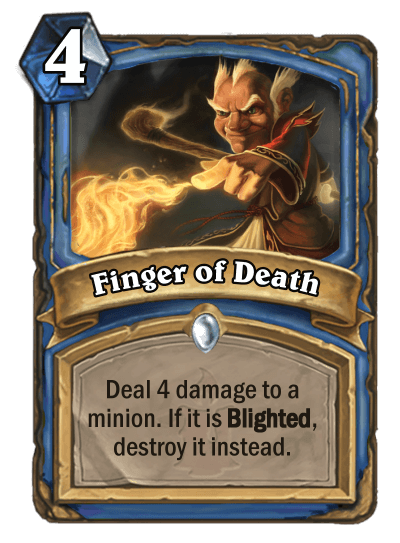
In Hearthstone most minions aren’t expected to survive more than a couple of turns on the board, and most classes lack healing altogether, so, while potent as a control tool, the effect is unlikely to prove oppressive. In fact, to increase its general utility I made it so minions and spells dealing Blight damage also apply the Blighted condition, activating additional synergies."
Did any particular set create a strange challenge to overcome when designing these cards?
DrNoOne: "The older sets (pre-Journey to Un’goro) were definitely the most challenging. In my opinion, the whole point of going through the process of designing cards for those sets is to try to match the design philosophies of Team 5 at the time, many of which didn’t weather the test of time very well. The result is deliberately making cards that you know are either problematic by themselves, or create problematic interactions down the line.
Ashes of Outland also proved unexpectedly tricky, because, as anyone that has played through the Burning Crusade in WoW can attest to, the heavy focus on Demons and Fel energies meant a class centred around Death magic had very little to draw from. Thankfully Auchindoun was my saving grace."
Are there any other cards you wish to highlight for any particular reason?
DrNoOne:
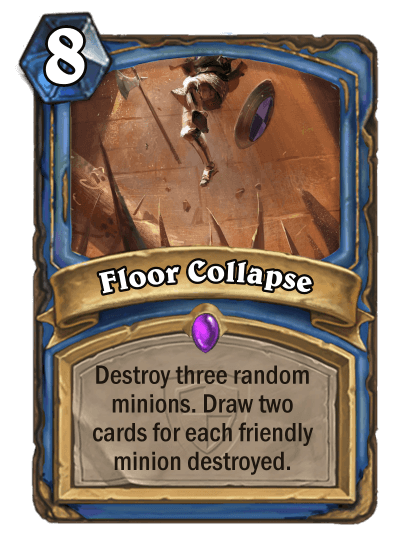
"Unwieldy and impractical, but properly balanced in all 4 possible outcomes. It is the kind of card my weird math brain loves way too much."
Do you have anything behind the scenes you want to share with us?
DrNoONe:
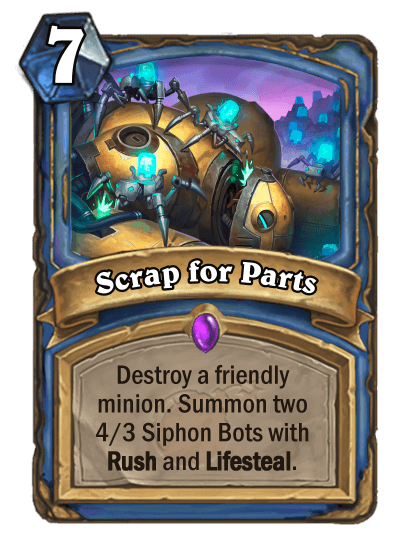
"This is just Walking Fountain made into a spell. Sometimes you can be genuinely creative, but when you can’t, it’s good to try to cheat creatively at least."
How long have you been making your own cards? What design philosophies do you have that you wish to share and spread to new creators?
DrNoOne: "I started at around the Boomsday Project, then took a break at around a year ago and recently picked it back up.
I don’t think I’m proficient enough to offer any real advice. But as with anything else you try to get good at, you start by reading as much as you can in order to understand the basics (It is a cliche in custom card circles, but Mark Rosewater is always worth a read or a watch.) Then you look around at what other people are doing, trying to learn from their mistakes. Then you start making your own, a lot of them. And if you stick to it long enough, you just might end up making something you like, and having learned something along the way."
Do you have anything else you want to share with us?
DrNoOne: "Looking forward to the Core set announcements next week!"
That will conclude this journey of how the Lich class was created. If you want to give yourself a chill, then be sure to check out the entire class by clicking the banner below and let us know what you think.


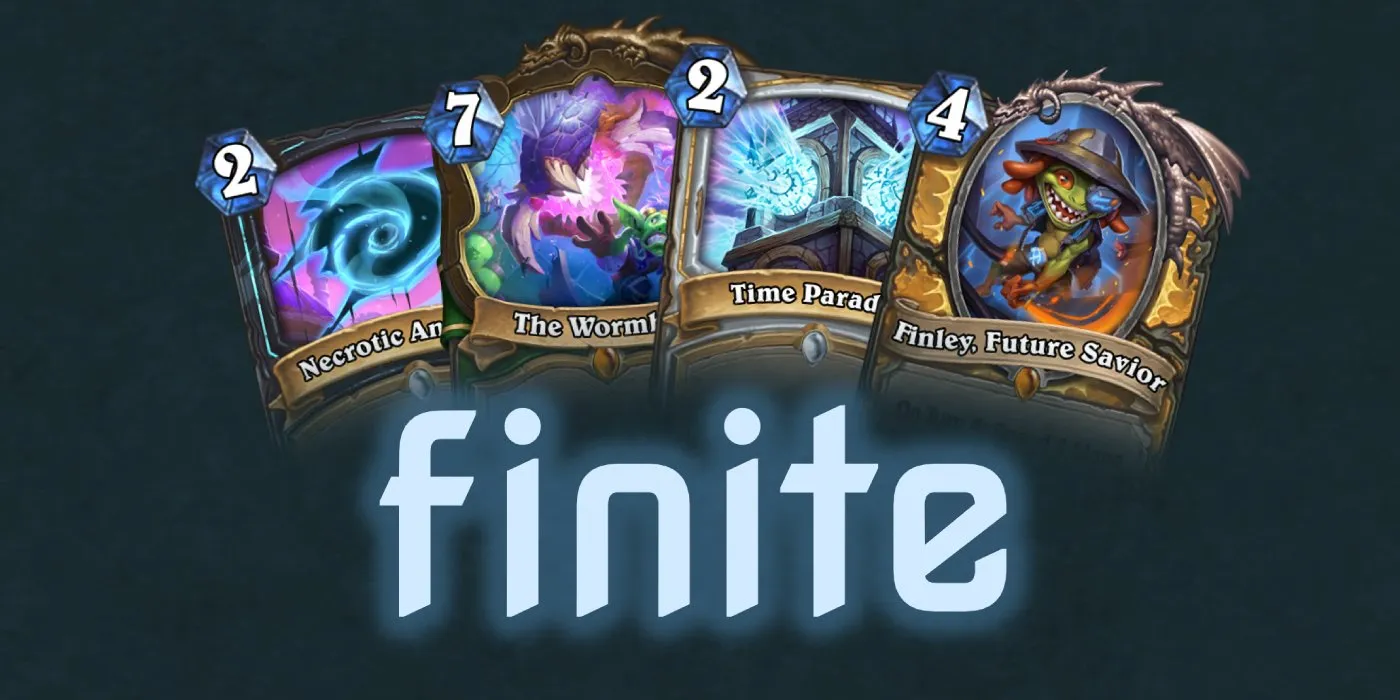
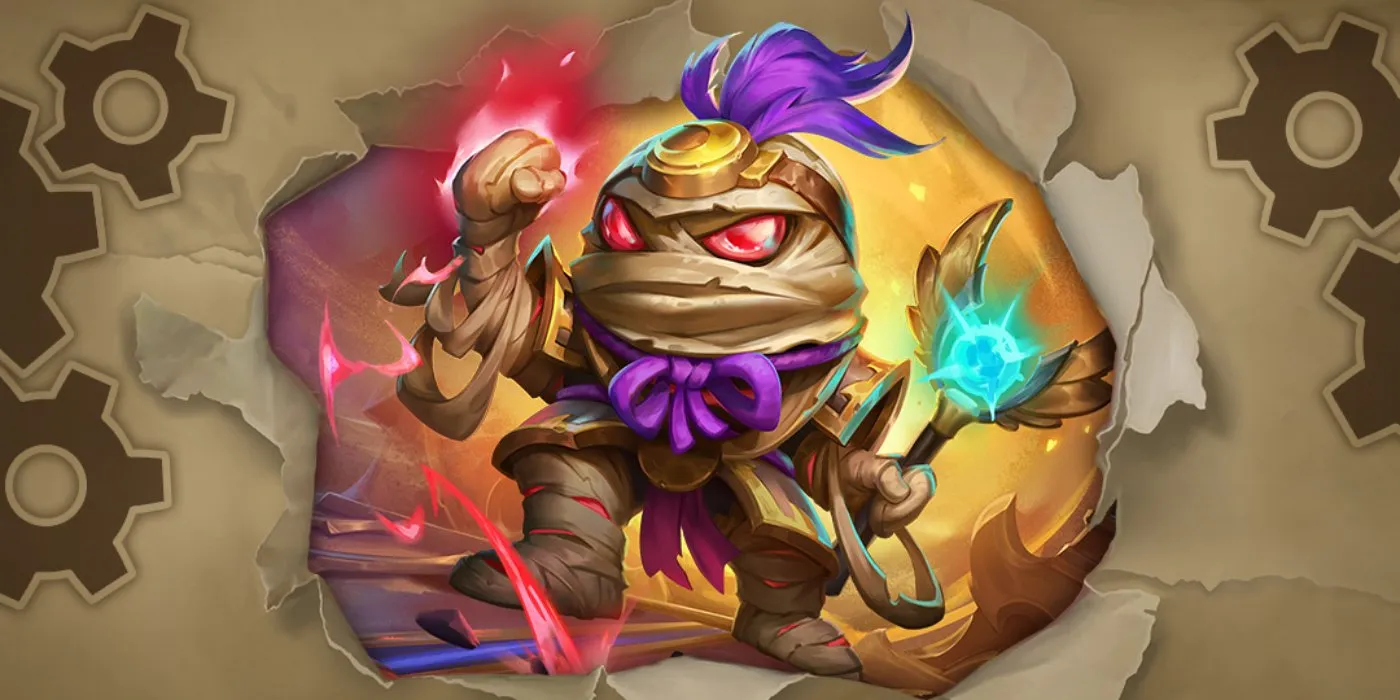
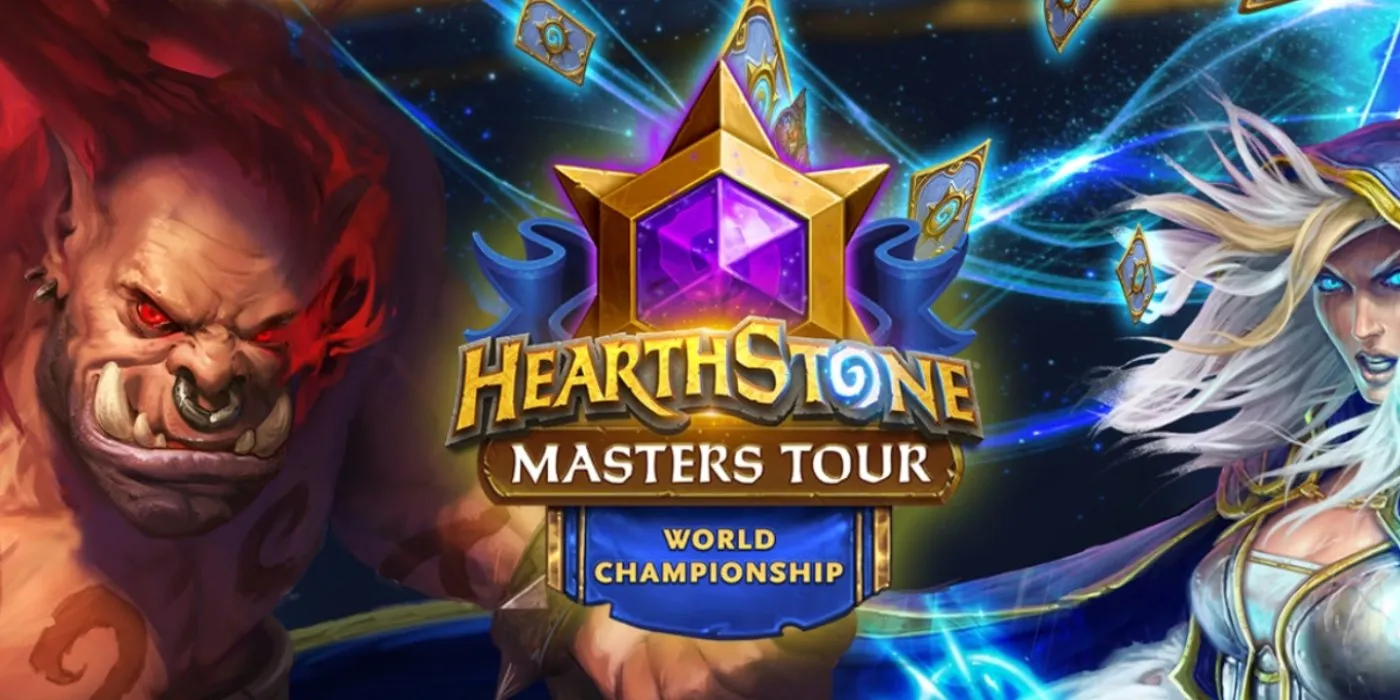
Comments
Fantastic originality and flavor! Thanks for expanding our ideas of what's possible in Hearthstone.
Very neat! More than any other class you've covered (which I've seen), this one captured a robust core fantasy. I could see myself playing this obsessively for a few weeks just to immerse myself in the experience, as I did with Demon Hunter earlier this year.
Simply OMG! What an effort. Absolutely loved the design and idea behind it. Thank you.